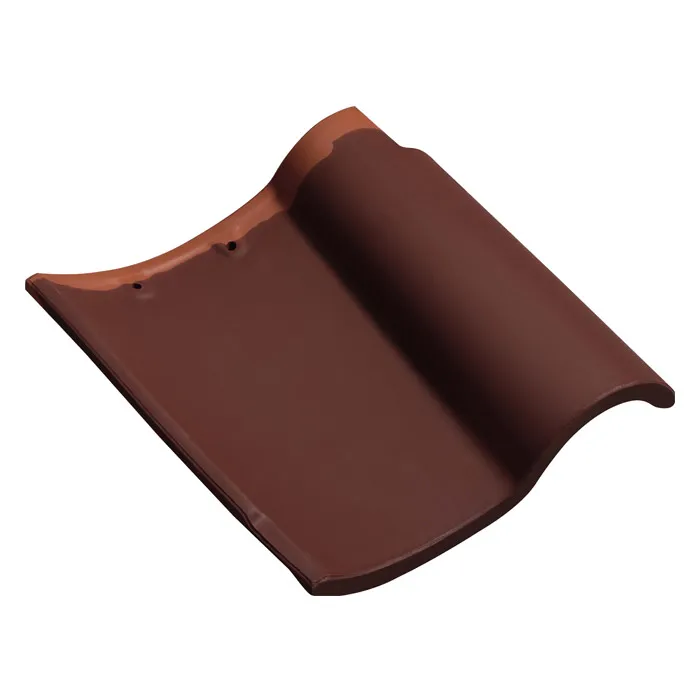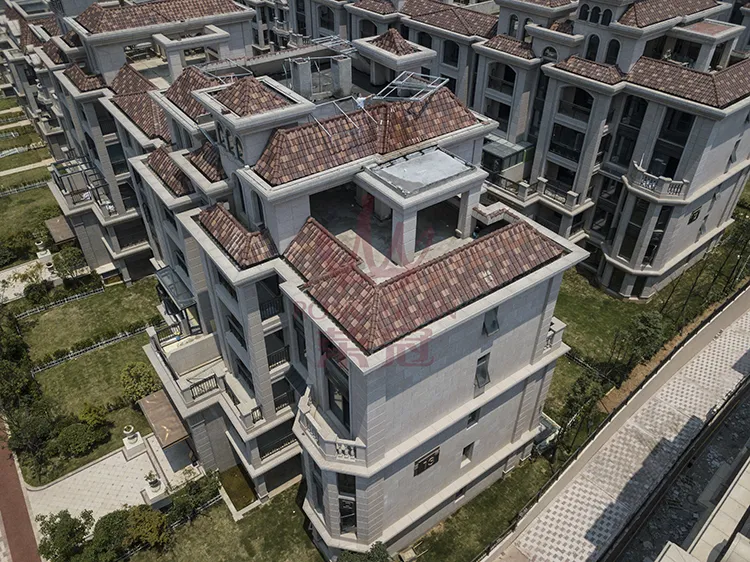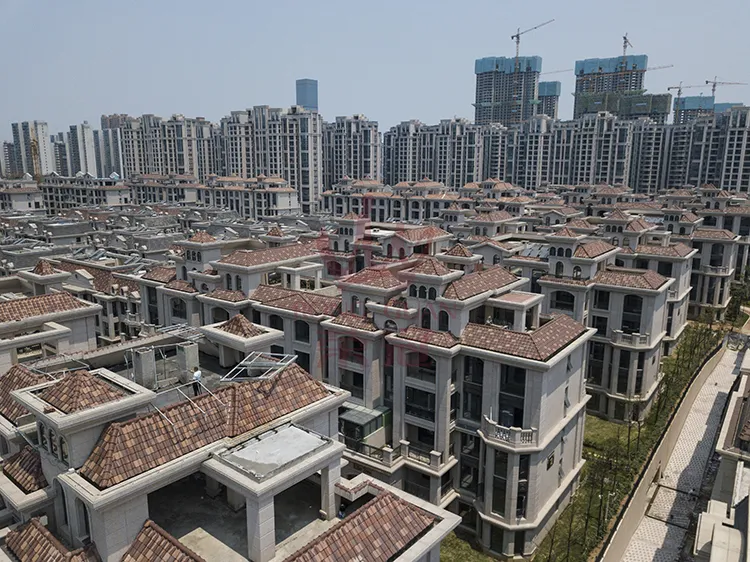Spanish Clay Roof Tile is a traditional roofing material popular for its elegant appearance and excellent performance. This tile is not only an important symbol of Spanish architectural style, but is also widely used around the world.
This article will examine in detail the historical background, manufacturing processes, design features, installation methods, and practical applications of Spanish clay roof tiles in construction.

What are Spanish Clay Roof Tiles?
Spanish clay roof tiles, as the name suggests, are roof tiles made of high-quality clay materials and have a typical Spanish style. Its most notable feature is the S-shaped design, which is not only beautiful but also has good drainage and waterproof properties.
S-shaped design:
The S-shaped design of Spanish clay tiles gives the surface a wavy appearance. This wavy shape not only adds visual beauty, but also effectively guides the flow of rainwater and prevents rainwater from accumulating on the tiles, thereby improving the waterproof performance of the roof.
Material selection:
Spanish clay tiles are made of high-quality natural clay and fired at high temperatures. The high density of clay and the ceramic texture formed during the firing process give the tiles high hardness and weather resistance, making them resistant to wind, rain, and extreme weather conditions.
The history of Spanish clay tiles
Origin and development:
The history of Spanish clay tiles dates back thousands of years. As early as the Roman Empire, people began to use clay tiles as building materials. Over time, the craftsmanship and design of clay tiles continued to improve and evolve. By the Middle Ages, Spanish clay tiles gradually developed a unique style and were widely used in the Mediterranean region.
Global Impact:
With the expansion of Spanish colonists, the scope of use of Spanish clay tiles also gradually expanded. Whether in other parts of Latin America, North America or Europe, Spanish clay tiles have become a symbol of tradition and quality. Today, Spanish clay tiles are not only widely used in Spain, but are also favored by architects and homeowners around the world.
Spanish clay tile making process
Raw material preparation:
The first step in making Spanish clay tiles is choosing a high-quality clay. Clay needs to be screened and purified to remove impurities. Then, mix the clay with just the right amount of water to form a uniform mud.
Forming and drying:
The mud is injected into the mold and pressed into the preliminary shape of S-shaped tiles. The formed tiles need to be naturally dried in the air for several days to remove excess moisture. During the drying process, direct sunlight and strong winds need to be avoided to prevent the tiles from cracking or deforming.
High temperature firing:
The dried tiles are fired in a high-temperature kiln. The firing process usually lasts for several hours and reaches temperatures of over 1,000 degrees Celsius. High-temperature firing not only removes residual moisture from the tiles, but also causes the minerals in the clay to chemically react to form a hard ceramic texture.
Quality inspection and packaging:
Fired tiles need to undergo strict quality inspection, including inspection of size, shape, color and strength. Qualified tiles will be packed and stored ready for shipment to the construction site.

What are the design features of Spanish clay roof tiles?
Unique shape:
Spanish clay tiles are known for their unique "S" or wavy design. This design is not only visually aesthetic, but also improves the drainage and wind resistance of the tiles. The corrugated tiles can better guide rainwater to the eaves, reducing the risk of water accumulation and leakage.
Various colors and textures:
Spanish clay tiles come in a variety of colors and textures, allowing you to choose based on architectural style and personal preference. Common colors include natural reds, browns, and grays that blend well into the natural environment. Surface texture treatments such as glazing, frosting and polishing further enhance the decorative effect of the tiles.
Good adaptability:
Spanish clay tiles are suitable for a variety of roof shapes and slopes. Whether you have a steep or gentle roof, this tile provides good coverage. In addition, Spanish clay tiles can be used with other building materials such as stone, wood and metal to form a unique architectural style.
How to install Spanish clay roof tiles?
Installation preparation:
Before installing Spanish clay tiles, adequate preparation is required. This starts with inspection and repair of the roof structure to ensure it can withstand the weight and forces of the shingles. Next, a waterproof layer and a ventilation layer are laid to improve the waterproofness and breathability of the roof. The waterproofing layer usually uses waterproof membrane or asphalt felt, while the ventilation layer includes vents and insulation panels.
Tile laying:
The laying of tiles needs to be done in a specific order and method. Usually starting from the eaves, it is laid up row by row. Each tile needs to overlap a certain amount to ensure waterproof performance. Tiles are fixed using nails, hooks or clips, depending on the design of the tile and the structure of the roof.
Edge processing:
The edge parts of the roof such as ridges, eaves and gables need to be treated with special edge tiles. These edge tiles are specially designed to provide extra waterproof protection and aesthetics. During installation, special attention should be paid to the fixing and sealing of edge tiles to prevent moisture from penetrating.

What are the application scenarios of Spanish clay tiles?
Mediterranean style architecture:
Spanish clay tiles are a classic choice for Mediterranean style architecture. Its wavy design and warm tones can add a strong Mediterranean style to buildings and are suitable for roof decorations in villas, resorts and historical buildings.
Modern architecture:
As design trends change, Spanish clay tiles are gradually being used in modern architecture. Its diverse color choices and elegant curved design can add a unique beauty to modern architecture.
Commercial buildings:
In addition to residential construction, Spanish clay tiles are increasingly used in commercial construction. Its durability and low maintenance make it ideal for commercial buildings such as hotels, shopping malls and office buildings.

